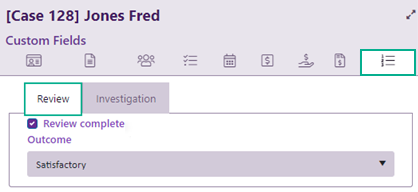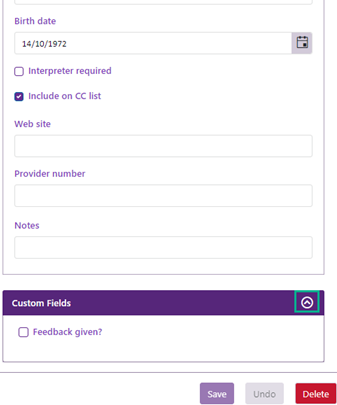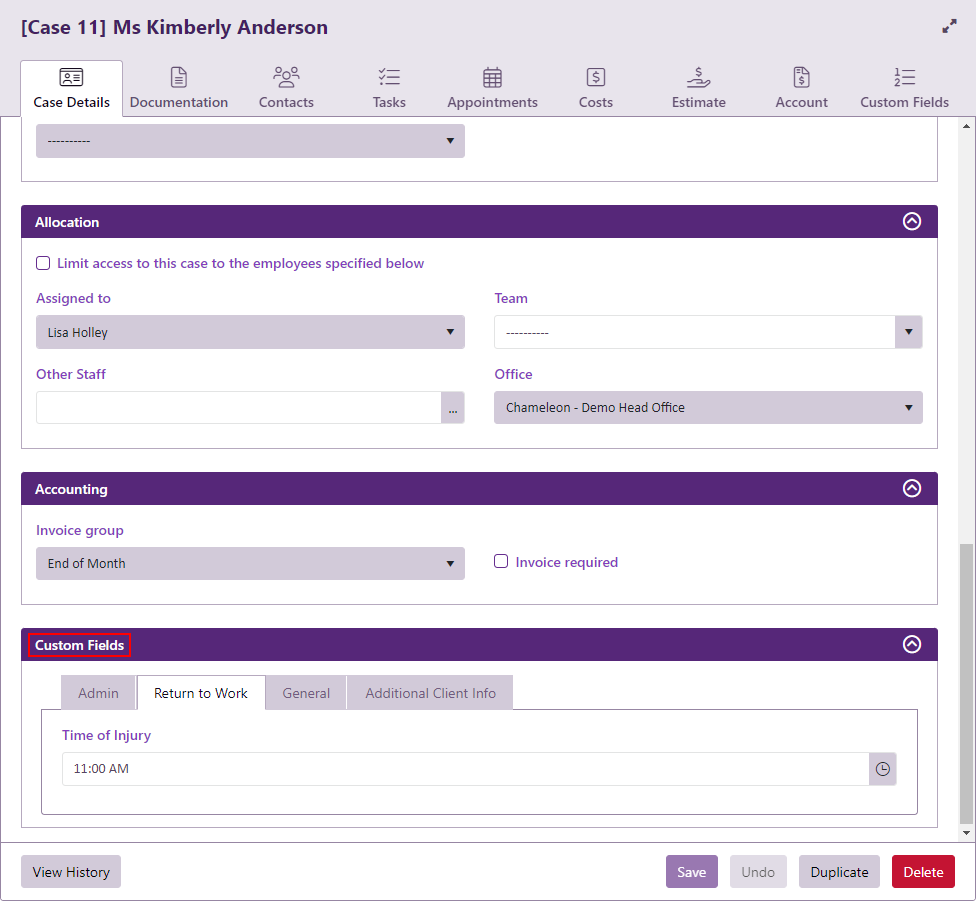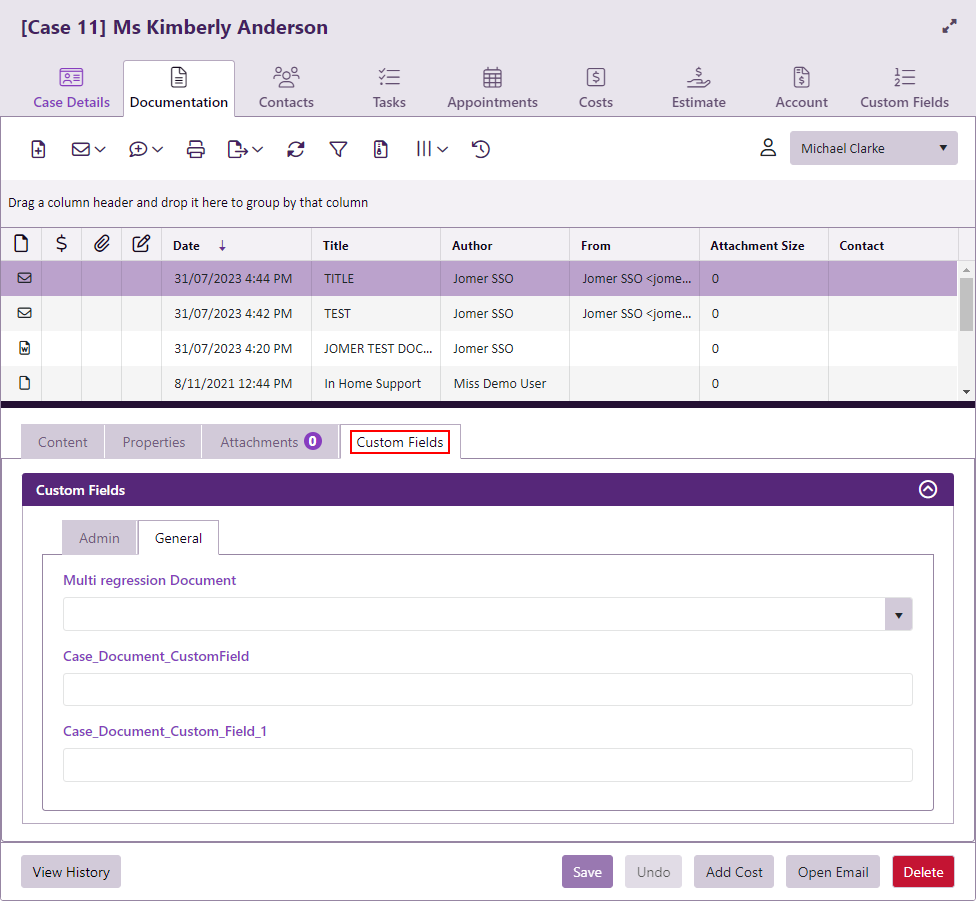Custom fields overview
Case Manager enables you to add your own fields to cases.
These custom fields are organised into sets that are accessed through custom fields tabs.
Custom fields and tabs are managed at the Custom Fields List.
You may like to start with the introductory video:
A custom field can be one of many types of field, such as text fields, dates, selections from dropdown lists, and so on.
You can add custom fields to:
- a case at its Custom fields tab
- case contacts in the Contacts tab, in the bottom of their details
- The Case Details Tab
- Documents
- Activities

The field is organised and displayed within a Custom Field Tab.
The value of a case custom field belongs to the case itself.

If necessary click the icon on the right to access them.
The value of a contact custom field belongs to the contact when in this case, not to the contact when accessed anywhere else, including at the Company List.

A dedicated Custom Fields section can be added to this tab to store relevant case details.

A list of Custom Fields can be appended to document entries.

A set of Custom Fields can be added to your Activity List to store relevant cost details.
Custom fields are organised into sets. Each set is linked to a custom fields tab.
In the case's Custom Fields tab the sets of custom fields are accessed by clicking custom fields tabs, as seen above.
In the Contacts settings custom fields tabs are not displayed if there is only one of them, as also seen above.
Custom fields tabs are linked to one or more case categories, which is an important part of controlling access to custom fields. See Access to custom fields below.
Custom fields are displayed at cases. They can also be:
- included in documents via the merge fields available in Word 2010 and later that can be added to document templates
- displayed as columns in the Case List, using the Case List Criteria.
- included in custom forms
This enables you to use them to sort, filter and organise the list, as well as create ad hoc reports
When you create a custom field you specify:
- whether it is a contact custom field or a case custom field
- which type of field it is (number, date, etc)
- which custom fields tab it is connected to
- who can access it
Tabs are restricted to certain case categories. This restriction determines which tabs (and hence, which custom fields) are potentially available at a case.
Permissions at both the custom field and the custom fields tab level determine whether any particular user can actually view (and possibly change) a field.
Custom fields tabs are defined as being linked to one or more case categories. Thus, a set of custom fields is potentially available at a case only when the case's category is linked to the tab that they are connected to.
For both custom fields and tabs, the actual user access is defined with view and modify permissions.
When you create new fields and tabs, the System Administrators security group is automatically given all access. However other groups of users do not have access unless their security group (or less commonly, name) is added to the field and tab's permissions.
Note that if a custom tab is set so that it cannot be seen, all the custom fields that are organised by this tab will not be visible either. Similarly if the tab is set so that it cannot be modified, all the fields that are organised by this tab cannot be modified either.
Thus, the custom fields that a user actually sees (and can possibly update) at a case depends on:
- whether they are looking at the Contacts tab or the Custom fields tab
- whether the custom tabs defined for the Contacts/Custom fields tab are both active and linked to this case's category - this enables them to be visible
- the sets of custom fields that are linked to visible tabs
- whether the user's access in enabled in the permissions for both the tabs and the custom fields within them
See Custom field security for further details.
Overall, this provides a very customisable system where custom fields are only available at appropriate cases and visible to/editable by appropriate users.
Formerly there was a limit of 1024 custom fields per database.
As of version 6.2 we've eliminated this restriction. For optimum performance we now recommend a limit of 5000 custom fields per database.

